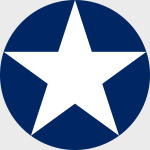Hobby Master HA0126 USN Douglas SBD-3 Dauntless Dive-Bomber - VS-41, USS Ranger (CV-4), "Operation Torch", 1942 (1:72 Scale)
"Why should we have a navy at all? There are no enemies for it to fight except apparently the Army Air Force."
- General Carl Spaatz, Commander of the US 8th Army Air Force, after WWII
 The Dauntless was the standard shipborne dive-bomber of the US Navy from mid-1940 until November 1943, when the first Curtiss Helldivers arrived to replace it. Between 1942-43, the Dauntless was pressed into service again and again, seeing action in the Battle of the Coral Sea and the Guadalcanal campaign. It was, however, at the Battle of Midway, that the Dauntless came into its own, singlehandedly destroying four of the Imperial Japanese Navy's frontline carriers. The SBD (referred to, rather affectionately by her aircrews, as "Slow But Deadly") was gradually phased out during 1944. The June 20th, 1944 strike against the Japanese Mobile Fleet, known as the Battle of the Philippine Sea, was the last major engagement in which it was used. From 1942 to 1944, the SBD was also used by several land-based Marine Corps squadrons.
The Dauntless was the standard shipborne dive-bomber of the US Navy from mid-1940 until November 1943, when the first Curtiss Helldivers arrived to replace it. Between 1942-43, the Dauntless was pressed into service again and again, seeing action in the Battle of the Coral Sea and the Guadalcanal campaign. It was, however, at the Battle of Midway, that the Dauntless came into its own, singlehandedly destroying four of the Imperial Japanese Navy's frontline carriers. The SBD (referred to, rather affectionately by her aircrews, as "Slow But Deadly") was gradually phased out during 1944. The June 20th, 1944 strike against the Japanese Mobile Fleet, known as the Battle of the Philippine Sea, was the last major engagement in which it was used. From 1942 to 1944, the SBD was also used by several land-based Marine Corps squadrons.
Built as a two-seat, low-wing Navy scout bomber, the Dauntless was powered by a single Wright R1820 1200-horsepower engine. It became the mainstay of the Navy's air fleet in the Pacific, suffering the lowest loss ratio of any U.S. carrier-borne aircraft. A total of 5,936 SBDs were delivered to the Navy and Marine Corps between 1940 and the end of its production, in July 1944.
This particular 1:72 scale replica of a US Navy SBD-3 Dauntless dive-bomber was flown by VS-41, embarked upon the USS Ranger during the landings in Northwest Africa in 1942.
Sold Out!
Dimensions:
Wingspan: 6-1/2-inches
Length: 5-inches
Release Date: January 2007
Historical Account "Through it All for Glory" - Operation Torch (initially called Operation Gymnast) was the British-American invasion of French North Africa in World War II, which started November 8th, 1942.
The Soviet Union had pressed the United States and Britain to start operations in Europe, and open a second front to reduce the pressure the German forces were bringing to bear on the Russian front. While the American commanders favored Operation Sledgehammer, landing in Occupied Europe as soon as possible, the British commanders believed that such a course would end in disaster. An attack on French Northern Africa was proposed instead, which would clear the Axis from North Africa, improve naval control of the Mediterranean and prepare an invasion of Southern Europe in 1943. American president Roosevelt suspected the African operation would rule out an invasion of Europe in 1943 but agreed to support Churchill.
The Allies planned an Anglo-American invasion of northwestern Africa - Morocco and Algeria, territory nominally in the hands of the Vichy French government. The Vichy French had around 60,000 soldiers in Morocco as well as coastal artillery, a handful of tanks and aircraft, with ten or so warships and 11 submarines at Casablanca. The Allies believed that the Vichy French forces would not fight, partly because of information supplied by American Consul Robert Daniel Murphy in Algiers. However they harboured suspicions that the Vichy French navy would bear a grudge over the British action at Mers-el-Kebir (near Oran) in 1940. An assessment of the sympathies of the French forces in North Africa was essential, and plans were made to secure their cooperation, rather than resistance. The Allies intended to advance rapidly eastwards into Tunisia and attack the German forces in the rear. General Dwight Eisenhower was given command of the operation, and set up his headquarters in Gibraltar. The Allied Naval Commander of the Expeditionary Force would be Andrew Cunningham; his deputy was Vice-Admiral Sir Bertram Ramsay who would plan the landing effort. (courtesy: Wikipedia)


